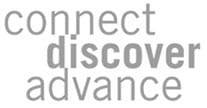Research Shows an Increased Risk for Certain Parts of the Country
- Posted on: Oct 15 2016
- Leave a response
 In the typical scenario, one may think that a person who lives in a region where the sun shines frequently is at a higher risk for skin cancer. According to the Centers for Disease Control and Prevention, this theory could be all wrong. This is important for physicians around the States, because it enables us all to think outside the box when conducting screenings with patients, or when educating them about their own unique risks for this disease.
In the typical scenario, one may think that a person who lives in a region where the sun shines frequently is at a higher risk for skin cancer. According to the Centers for Disease Control and Prevention, this theory could be all wrong. This is important for physicians around the States, because it enables us all to think outside the box when conducting screenings with patients, or when educating them about their own unique risks for this disease.
The data from the CDC suggests that individuals who live in Idaho, Vermont, Utah, Minnesota, and Delaware exhibit the highest rates of skin cancer among all of the states in the U.S. It is also proposed that residents of these states are at greater risk for melanoma than folks who live in Texas, California, and Florida, where the sun shines more often than not.
The reason for this data is simple, and it comes down to the individual. Those who live in areas of the country where sunshine is intermittent are not exposed regularly. As a result, the little bit of exposure they do get tends to lead to sunburn. As you know, it is sunburn that presents the risk for all types of skin cancer.
Additional Factors to Remember
When consulting with patients regarding skin cancer, physicians look at a number of factors besides the history of sunburns. These include:
- Excessive exposure to UV light over time. This could be sunlight or the lights in tanning beds.
- Compromised immunity.
- Older age.
- Family history.
- Numerous moles or atypical moles and growths.
Basal-cell and squamous-cell carcinomas still outnumber melanoma diagnoses, numbering more than 5 million each year. However, the American Cancer Society also estimated that over 76,000 cases of melanoma would be diagnosed this year alone.
The widespread concern about skin cancer is keeping more people indoors more often. This has resulted in a pandemic of vitamin D deficiency. In addition to offering patients the most efficient treatment for skin cancer, Mohs micrographic surgery, physicians are in the position to educate patients about the measures they can take to practice sun-safety, such as wearing sun block with zinc oxide, and getting a good dose of sunshine during the early morning hours in order to maintain adequate levels of vitamin D.
The American Society for Mohs Surgery provides educational programs that support efficient patient care. For more information, call (800) 616-2767.
Posted in: MOHS Surgery, Skin Cancer


